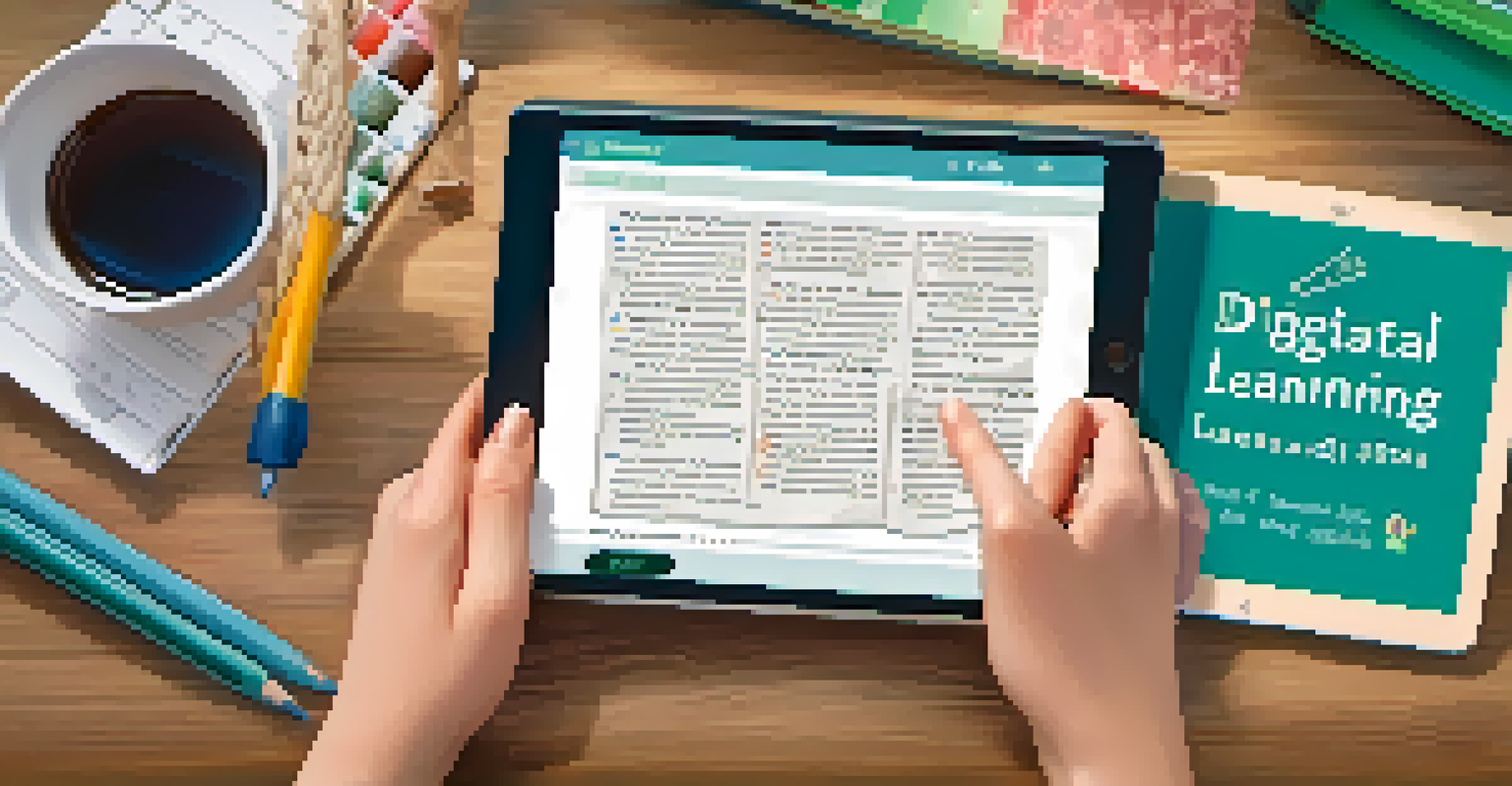Empowering Students: The Role of Choice in Education

Understanding Choice in Education and Its Importance
Choice in education refers to giving students options over their learning experiences. This could mean selecting courses, projects, or even teaching styles that resonate with their interests. When students feel they have a voice in their education, they are more likely to engage and invest in their learning journey.
Education is not the filling of a pail, but the lighting of a fire.
The importance of choice lies in its ability to cater to diverse learning styles. Just like how we all have different favorite foods, each student has unique preferences when it comes to learning. Allowing students to choose helps them discover what works best for them, leading to a deeper understanding of the material.
Moreover, when students exercise choice, they build essential life skills such as decision-making and responsibility. These skills are not only relevant in academics but will also serve them well in their future careers and personal lives.
The Psychological Benefits of Empowering Students
Empowering students through choice can significantly enhance their mental well-being. When students feel they are in control of their education, it boosts their confidence and self-esteem. They begin to see themselves as active participants in their learning rather than passive recipients.

Additionally, autonomy in learning can reduce feelings of anxiety and stress. Just imagine a student faced with a rigid curriculum; they might feel overwhelmed and disengaged. In contrast, a student who can choose topics that spark their curiosity is more likely to thrive and enjoy the learning process.
Empowerment Boosts Student Engagement
Allowing students to make choices in their education fosters a sense of ownership, leading to increased engagement and motivation.
Ultimately, this empowerment fosters a positive classroom environment. When students feel valued and respected for their choices, they are more inclined to collaborate with peers and participate actively, creating a vibrant community of learners.
Choice as a Catalyst for Engagement and Motivation
When students have the freedom to choose, their engagement levels soar. Picture a student who loves art being allowed to complete a project in a creative format. This not only makes learning enjoyable but also instills a sense of ownership over their work.
The best way to predict the future is to create it.
Motivation is deeply intertwined with choice. A student who can select their learning path is more likely to pursue their interests passionately. This intrinsic motivation often leads to better academic performance, as students are driven by their own curiosities rather than external pressures.
Furthermore, when students feel engaged, they are more likely to take risks in their learning. This willingness to explore new ideas and concepts can lead to innovative thinking and problem-solving skills that extend beyond the classroom.
Creating a Culture of Choice in the Classroom
To cultivate a culture of choice, educators need to be intentional in their planning. This might involve designing assignments that offer various options or allowing students to suggest topics for projects. By integrating choice into the curriculum, teachers can encourage a more personalized learning experience.
It's also essential for teachers to communicate the value of choice to students. When students understand that their input is valued, they are more likely to embrace the opportunities presented to them. This helps to create an inclusive environment where every student feels empowered to share their ideas.
Choice Supports Diverse Learning Styles
Personalized options in education cater to various learning preferences, helping students understand material in ways that resonate with them.
Lastly, fostering a culture of choice involves continuous feedback. Educators should check in with students about their experiences and preferences, adjusting the learning environment accordingly. This iterative process ensures that the classroom remains dynamic and responsive to student needs.
Examples of Choice in Different Educational Settings
Choice can manifest in various forms across different educational settings. For instance, in project-based learning environments, students might choose how they demonstrate their knowledge—be it through a presentation, a video, or an artistic creation. This flexibility allows students to showcase their strengths in ways that resonate with them.
In a more traditional classroom, choices could include selecting from a range of reading materials or topics for research papers. By offering diverse options, teachers cater to varying interests and abilities, making learning more relevant and impactful.
Even in extracurricular activities, providing choice can enhance student involvement. Whether it’s selecting clubs to join or deciding on community service projects, students who choose their paths are more likely to engage meaningfully and develop a sense of belonging.
Challenges of Implementing Choice in Education
While the benefits of choice in education are clear, there are challenges to consider. One significant hurdle is the potential for unequal access to resources. Not all students may have the same level of support or access to materials they need to pursue their chosen paths, which can create disparities in learning outcomes.
Another challenge is the risk of overwhelming students with too many options. Just like at a restaurant with an extensive menu, too much choice can lead to indecision and anxiety. Educators must strike a balance by providing enough options to inspire without causing confusion.
Challenges in Implementing Choice
While beneficial, implementing choice in education can be hindered by unequal access to resources and potential overwhelm from too many options.
Lastly, teachers may face pressures from standardized curricula that limit the ability to offer choice. Navigating these constraints requires creativity and advocacy, as educators work to ensure that students still have opportunities for autonomy within the required framework.
The Future of Education: Embracing Choice
As we look to the future of education, embracing choice will be crucial for fostering a generation of empowered learners. The shift towards personalized learning experiences is already underway, with many schools integrating technology that enables students to follow their interests. This trend reflects a growing recognition of the importance of student agency.
Moreover, the rise of remote and hybrid learning models offers even more opportunities for choice. Students can select when and how they engage with materials, allowing for a more tailored learning experience that fits their schedules and lifestyles. This flexibility can lead to increased motivation and satisfaction.

Ultimately, prioritizing choice in education aligns with the broader goal of preparing students for a complex world. By equipping them with the skills to make informed decisions and pursue their passions, we are setting the stage for lifelong learning and success beyond the classroom.